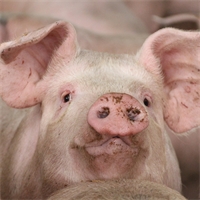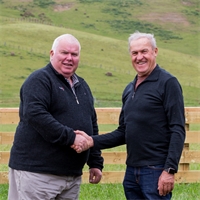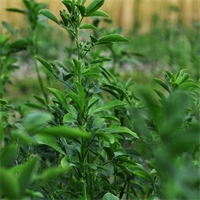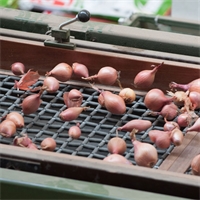23May
Agronomy Update Winter 2023
Words by Craig Rodgers, Ruralco Group Manager On-Farm Sales
The autumn period has again produced a consistent spell of warmer weather and with a steady stream of regular rainfall, we are set up heading into winter. Soil temperature has remained consistent, although the cold spell currently should slow pasture growth. Feed surpluses have been good in the latter part of autumn and the drier conditions earlier had meant irrigation remained on through mid-autumn.
Cereals
Autumn-sown cereals have established well and were planted very early this year due to the favourable conditions. Early indication is that the area of autumn-sown cereals may be down on the previous year. Grain pricing has been stagnant through autumn although there has been some movement of product to end users. All cereal varieties seem to be readily available and at time of writing we were awaiting the 2023 harvest FAR trial results.
It is too early to predict how much uncommitted grain there is unsold in the market, but with yield increases following a good harvest there may be as much as 20% increase of grain available for the winter and spring markets. There has been minimal movement of free product post-harvest and we are fielding some enquiry for late winter and spring requirements for both wheat and barley.
Grain prices have slightly decreased through May as supply outstrips demand. Over the past month there has been limited demand from dairy farmers and other end users. There has been some enquiry to lock tonnage in for the spring period, but most movement throughout the past few months has been for contracted grain.
We have seen increased uptake of the use of cereals, particularly oats for catch cropping. Supply has been good post-harvest and we are seeing some forward orders for drilling once early transition of winter grazing paddocks are fed. Soil and weather conditions will influence when these are sown directly into bare paddocks, and we are seeing this as a viable option across most of the year now. Read our catch cropping guide here.
Pasture
Pasture renewal continued through the autumn with a swing towards shorter term grasses. They have increased growth through the late autumn and winter and can often persist through heavy grazing. Planning for spring pasture renewal is already underway and with any crop or pasture this is all weather dependent, hopefully if we get an early winter, we will get an early spring and once the soil temperatures start heading up is an appropriate time to plant but this can depend on soil conditions. Some heavier soil types are too boggy to get implements across in early spring and you are better waiting until the days get longer and warmer.
We have seen steady rainfall through autumn, but conditions have remained suitable to all grazing types however as conditions soften it is important to ensure you protect any newer pastures from stock damage but still look to graze them to optimum covers for the winter period. Pastures being grazed immediately following rain can cause damage especially around gateways. Patching these up during winter may not get the desired result and waiting until early spring will be a better option. There are some good options available to help tidy up these areas but ensure you consider what is planned for that paddock in the future. If it is likely to be re-grassed or cropped then a short-term grass or renovation-style mix would be suitable, but if it is a well performing or newish pasture then look to spend a little more to ensure it is back performing to its potential.
If you are having stock on pastures over the winter period, please ensure you choose carefully which paddocks can handle the conditions ensuring you don’t damage too many new or good pastures. Selection of cultivars is also important and while there can be a variation in pricing, the Forage Value Index is a great guide to selecting the grass that will produce best when you need it to. Check it out here.
Any grass will look good in the first couple of years, but persistence is where you get the greatest value.
Winter Crops
The measuring and grazing of fodder beet and other winter crops is underway and as usual the general variety discussion with farmers is revolving around yield, dry matter content and stock suitability. Early weights are showing good results although earlier weighed crops were down on dry matter content. There does not seem to be too much variance across varieties, however, once full yield assessments are complete, we can analyse what has performed better this year. The transition period remains the most important process of the fodder beet crop and an independent yield assessment is only a guide as crops can vary in size across a paddock. The most accurate estimation is often measured by what the stock are eating or sometimes what they are leaving behind.
Once again, we have seen an increase in kale area this season, and crops at this stage are looking very good. Most kale crops had steady rainfall across them for most of the summer period and have continued to grow through the late summer and autumn. At this early stage there seems to be satisfactory amounts of winter feed available, and these will only increase as we get some frosts which will bring the dry matter percentage up. If some milder weather continues and ground conditions remain favourable the conversion of feed should be high through the early part of winter.
Maize
We have seen some excellent maize yields recently following good establishment in the spring and suitable growing conditions throughout summer and autumn. There had been an increase of plantings this past season and with the development of a wider range of varieties specific to different climates and growing seasons giving suitable options for most farmers.
Related

New Zealand pork producers could be expected to feel like a sector under siege in recent years. With...
Read More

Aching joints, sore back, uneasy sleep and recurring irritability may all seem unrelated, but in fac...
Read More

The Ruralco Board is pleased to announce the appointment of Sir David Carter as its new Chair follow...
Read More

Whether it’s extreme weather events or changing regulations, dealing with uncertainty is a constant...
Read More

A closer look at Autumn sown arable crops, Barley grass control in Pasture and Weed control in Lucer...
Read More

In the past months, the ability of New Zealanders to access and afford quality fresh food has been i...
Read More